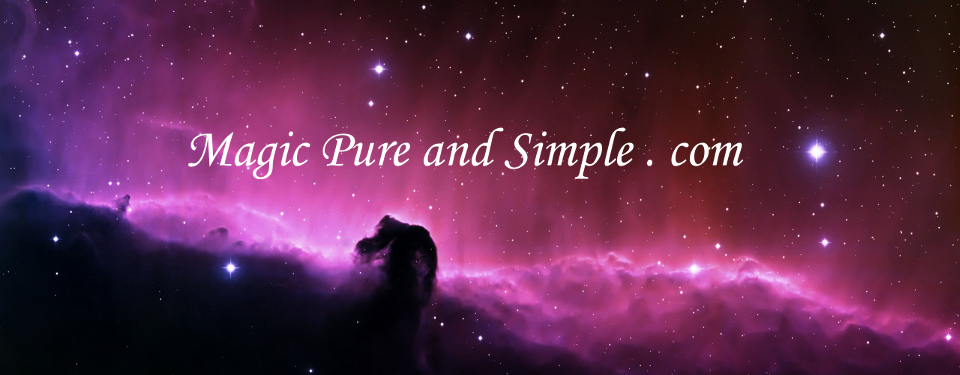In the 1970s the philosophy of Chaos magic arose its practitioners are called Chaos Magicians or Chaotes. It was an attempt to strip away most of the dogma and religious mindset around the main occult traditions such as Thelema, Ceremonial Magic, and Neopagan ritual. The forerunners of Chaos Magicians sought to refine magic down to the core truths. One of the most profound observations of chaos magic philosophy is that belief shapes perception. Most Chaos magicians seek to shed all fixed models of the universe saying that none of them actually hold any truth, but are each simply a temporary model that shapes experience. The early books of Chaos magic have popularised the immortal line most core to their philosophy “Nothing is true, everything is permitted”. Yes, you might recognise this from Assassin’s Creed, but Chaos Magicians have been saying it since at least the early-80s. This means to say that no perception we could possibly have is a true reflection of reality because every perception is affected by our beliefs. That being so we can choose for ourselves any reality we wish to experience by altering our beliefs.
In order to explore the effect of belief on spiritual practice it is often necessary to change the belief. This is called paradigm shift. Swapping one’s beliefs for a new set of rules or a new magical system. Peter Carroll, considered one of the two fathers of Chaos Magic, suggests rolling a die each morning and thinking of the world from a religious perspective based on the result. 1: Paganism, 2: Monotheism, 3: Atheism, 4: Nihilism, 5: Chaoism (as above) or 6: Superstition. Phil Hine, considered the other father of Chaos Magic, suggests that you should completely decondition the initiate from all beliefs and associations with ego. You continue with this practice until you have an extremely stable sense of self that does not rely on your physical being, political affiliations, career, hobbies, gender, religious belief or practice, morals, race, or concerns for freedom of will.
In order to break down the concern for the existence of deities, many Chaos Magicians happily substitute deities with stuff from pop culture. This was similar to OTO member Kenneth Grant who included rituals aimed at the creatures from the 1920s writings of HP Lovecraft, the Cthulhu mythos. An interesting book called Our Gods Wear Spandex suggest that superheroes fulfil the role that was left empty by the gods and their stories fulfil the role of mythology.
The earliest order of Chaos Magicians is the Illuminates of Thanateros which still exists today. Illuminates implies they are somewhat enlightened. Thanateros is a compound word consisting of “Thanatos” (Death) and “Eros” (Love), theoretically the two greatest motivators/forces to affect the human mind. Some Chaos magicians like to greet each other with Dholcey and Choyofaque which are made up “barbarian” words meaning “hello” and “do the great work” respectively. Dholcey also means goodbye and cheers. I don’t know why they do this probably to match the Thelemic tendency to greet with “93”.
Many people are drawn to Chaos Magic because they appreciate the permission to break the rules of magic. However, they do not appreciate that magic provides those rules as a tool to obtain certain magical experiences and they rarely acknowledge the true purpose of Chaos magic, which is to see the world directly rather than through a lens of beliefs.
Another tradition inspired by Chaos Magic is Discordianism. Discordians believe that order and chaos are both illusions to be removed like the models of chaos magic. They establish that every person is the pope of this religion. They worship Eris (Discordia) the goddess of chaos and existence and her sister Aneris (Harmonia) who is symbolic of order and non-existence. They practice Operation Mindfuck where they deliberately sow conspiracy theories and blame the Bavarian Illuminati for everything. They also practice spells to create more chaos. In ritual, they use the 5 elements: Sweet, Prickly, Pungeant, Orange and Boom.
Discordians accept that there is no way to truly see the universe directly, but only through the lens of current beliefs. So there’s no point in trying. But sometimes there’s no point in stopping either, so keep trying.
Any order or organisation of Discordians is an illusion and does not really exist, but Discordians can recommend reading to each other. Anyone trying to organise a group of Discordians is asking for ridicule. There is no training in Discordianism because everyone is already a pope. You can never win an argument with a Discordian because everything you say is an illusion, do not try. Discordians are really annoying, but there is still stuff to learn from them, it’s just easier to learn from Phil Hine’s writing than directly from a Discordian in person.
See also : Terms for magical practitioner

Comments
2 responses to “What is a Chaos Magician and Discordian?”
[…] Chaos Magician / Discordian […]
[…] magical practice or group of practices united by a similar philosophy or school of magic. In Chaos magic, in the late 1970s, the term suffered a further significant mutation to mean the overall spirit of […]